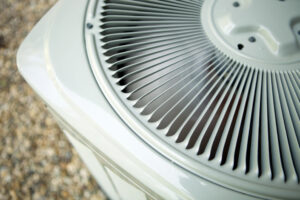The decision to invest in a new air conditioner for your home can be both exciting and daunting. It’s a long-term investment that you have to live with for the next 10-15 years so you want to make the right decision. With that in mind, you may be researching both central air conditioners and mini split units.
Both systems are excellent, but each one does have its own unique pros and cons. No matter what you choose for your AC installation in Brandon, MS, you want to make an educated decision. You can keep reading to learn about both systems as well as the benefits and downsides of each one.
Benefits of a Central AC
A central air conditioner is often considered the gold standard of cooling. This type of system has been around for a long time, and the design has been tweaked as technology within the industry grows and changes. Central air conditioners are now considered highly efficient because they have to meet industry-accepted energy standards.
One particular benefit of a central air conditioner is that installation is very easy if you already have an existing central AC installed in your home. Your home is already set up, wired, and connected to function with a central air conditioner. While there’s still a lot that goes into installing a new central air conditioner, replacing one system with a similar upgraded version is always easier than replacing it with a completely different type of air conditioner.
Benefits of a Mini Split
A ductless mini split is unique from other types of air conditioners because it does not require any ductwork to cool your home. Instead of having a single central unit inside of your home that attaches to ductwork, you have a variety of smaller AC units distributed throughout your home. These units can provide individualized cooling for each room or work together to offer whole-house cooling.
Plus a ductless mini split uses a heat pump, so it also offers heating in the winter. This eliminates the need to have a separate heater installed in your home. Since a ductless mini split attaches up near the ceiling in each room, you can save a lot on storage space compared to what you would need for an indoor air conditioner, heater, or furnace, and the accompanying ductwork.
Downsides of a Central AC
If you don’t already have a central air conditioner, installing one can be quite the process, although not impossible by any means. You have to dedicate storage space to the indoor portion of the unit, plus have space available in your attic or basement for the attached ductwork. If you live in an older or smaller home, this might be a problem.
You also have to consider that a central air conditioner will never be as efficient as a ductless mini split. No matter how high on the SEER2 scale for efficiency the air conditioner is, some of the cool air will inevitably get trapped in the ductwork. Plus if your ductwork has leaks, you’re losing even more air, which increases your energy costs.
Downsides of a Mini Split
Installation for a ductless mini split costs significantly more than installation for a central air conditioner. However, you do have to weigh this against the potential energy savings you will enjoy over the life of the unit. Even though you’re spending more upfront, a ductless mini split is considered 100% efficient since all of the cooled or heated air blows directly into your home. In fact, you could slash your energy costs by up to half. So even though the installation may be more expensive, you still stand a chance to save a lot over the life of the unit.
Contact AirSouth Cooling and Heating today to schedule an appointment for AC installation.








